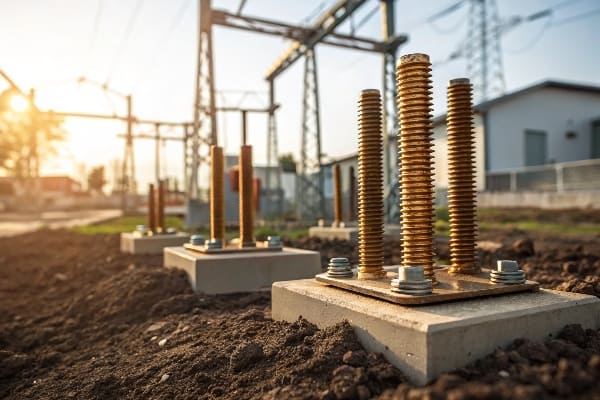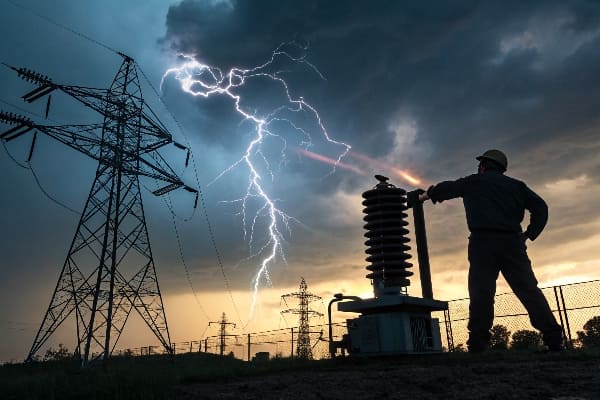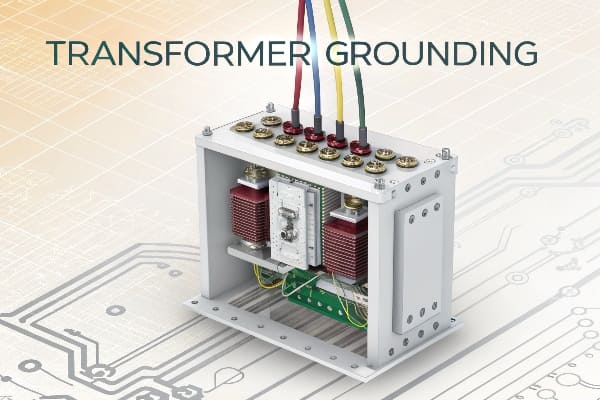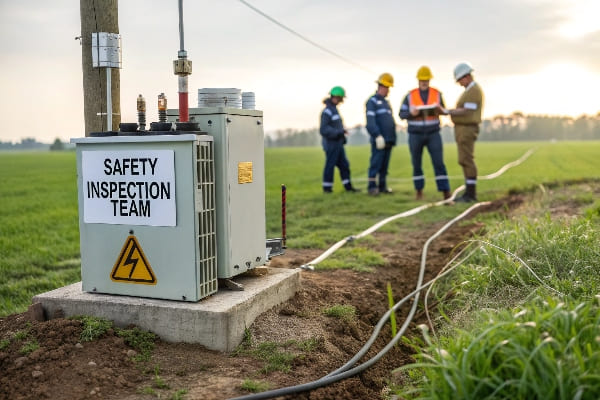Grounding of a power transformer: Why is it crucial?
Are you worried about the safety and efficiency of your power distribution system? The answer might be right under your feet.
Grounding a power transformer is a critical safety measure that protects equipment, personnel, and ensures proper system operation. It provides a path for fault currents, stabilizes voltage levels, and helps in detecting and clearing faults quickly.

Let’s dig deeper into the world of transformer grounding and uncover why it’s so important for your electrical systems.
What happens if a transformer is not grounded?
Imagine a ticking time bomb in your electrical system. That’s what an ungrounded transformer can be.
An ungrounded transformer can lead to dangerous voltage spikes, increased risk of electrical shock, difficulty in fault detection, and potential equipment damage. It can also cause system instability and compromise the overall safety of the electrical installation.

Safety Risks
In my years of experience with transformer installations, I’ve seen firsthand the dangers of ungrounded systems:
- Electrical Shock Hazard: Without a proper ground, the transformer’s metal parts can become energized, posing a serious risk to anyone who comes in contact with them.
- Arc Flash Risk: Ungrounded systems are more prone to arc flash incidents, which can cause severe burns and equipment damage.
- Fire Hazard: Undetected faults in ungrounded systems can lead to overheating and potentially start fires.
Operational Issues
Ungrounded transformers can also cause several operational problems:
| Issue | Description |
|---|---|
| Voltage Instability | Lack of a reference point can lead to unpredictable voltage fluctuations |
| Fault Detection Difficulty | Without a ground path, it’s harder to detect and locate faults in the system |
| Overvoltage Stress | Transient overvoltages can stress insulation and lead to premature equipment failure |
System Reliability
The reliability of your entire electrical system can be compromised when transformers are not properly grounded:
- Intermittent Faults: Ungrounded systems may allow intermittent faults to persist, leading to mysterious outages and hard-to-diagnose problems.
- Equipment Lifespan: The stress on insulation and components in an ungrounded system can shorten the lifespan of expensive electrical equipment.
- Power Quality Issues: Ungrounded systems are more susceptible to power quality problems like harmonics and voltage distortions.
Why do we ground neutral in power transformers?
Have you ever wondered why that extra wire is so important? The neutral grounding in power transformers is more than just an afterthought.
We ground the neutral in power transformers to establish a reference point for voltage measurements, provide a return path for unbalanced loads, limit overvoltages, and facilitate fault detection and clearing. It’s a crucial aspect of system safety and stability.

Voltage Stabilization
Grounding the neutral helps stabilize the voltage in the system:
- Reference Point: It provides a zero-voltage reference point for the system.
- Phase Balance: It helps maintain balance between phase voltages.
- Overvoltage Protection: It limits the voltage rise on healthy phases during ground faults.
Fault Management
In my experience, neutral grounding significantly improves fault management:
| Aspect | Benefit |
|---|---|
| Fault Detection | Makes it easier to detect ground faults |
| Fault Clearing | Provides a path for fault current, enabling protective devices to operate |
| System Protection | Helps in limiting fault currents to manageable levels |
Load Balancing
Neutral grounding also plays a role in load management:
- Unbalanced Loads: It provides a return path for current in systems with unbalanced loads.
- Harmonic Currents: It can help in managing harmonic currents in the system.
- Single-Phase Loads: It allows for the connection of single-phase loads in a three-phase system.
Safety Enhancement
The safety benefits of neutral grounding cannot be overstated:
- Touch Voltage Reduction: It helps limit the voltage that a person might contact during a fault.
- Equipment Protection: It provides a path for surge currents, protecting equipment from damage.
- Consistent Operation: It ensures consistent and predictable system behavior, which is crucial for safety planning.
Do you ground both sides of a transformer?
Is double grounding necessary, or is it overkill? Let’s explore the grounding requirements for transformers.
In most cases, both the primary and secondary sides of a transformer should be grounded. However, the specific grounding requirements can vary depending on the transformer type, system configuration, and local electrical codes.

Primary Side Grounding
Grounding the primary side of a transformer is crucial:
- System Grounding: It’s often part of the overall power system grounding scheme.
- Fault Protection: It provides a path for primary-side fault currents.
- Overvoltage Protection: It helps protect against lightning strikes and switching surges.
Secondary Side Grounding
The secondary side grounding is equally important:
| Reason | Explanation |
|---|---|
| Safety | Ensures that the secondary voltage is referenced to ground |
| Fault Clearing | Enables proper operation of overcurrent protection devices |
| Code Compliance | Often required by electrical codes for certain voltage levels |
Special Cases
In my years of working with transformers, I’ve encountered several special cases:
- Isolation Transformers: These may have an ungrounded secondary to provide isolation.
- Auto-transformers: They typically have a common grounding point for both primary and secondary.
- Delta-Wye Transformers: The Wye side is usually grounded, while the Delta side may remain ungrounded.
Grounding Considerations
When deciding on grounding both sides, consider:
- System Voltage: Higher voltage systems often require more comprehensive grounding.
- Transformer Size: Larger transformers may have more complex grounding requirements.
- Application: The specific use of the transformer can influence grounding needs.
- Local Regulations: Always comply with local electrical codes and standards.
How to ground a power transformer?
Are you ready to ensure your transformer is safely grounded? Let’s walk through the process step by step.
Grounding a power transformer involves connecting the transformer’s neutral point or tank to the earth. This is typically done using a low-resistance connection to a grounding electrode system, following specific procedures and standards to ensure safety and effectiveness.

Grounding Components
To properly ground a transformer, you’ll need:
- Grounding Electrode: Usually a copper rod driven into the earth.
- Grounding Conductor: A copper wire connecting the transformer to the electrode.
- Grounding Clamps: To secure connections between components.
- Ground Test Meter: To verify the quality of the ground connection.
Step-by-Step Process
Here’s a basic process I follow when grounding a transformer:
| Step | Description |
|---|---|
| 1. Site Preparation | Clear the area and identify the best location for the ground rod |
| 2. Install Ground Rod | Drive the grounding electrode into the earth to the required depth |
| 3. Connect Grounding Wire | Attach the grounding conductor to the transformer’s grounding point |
| 4. Secure Connections | Use appropriate clamps to ensure solid connections |
| 5. Test the Ground | Measure the ground resistance to ensure it meets standards |
Safety Precautions
Safety is paramount when grounding transformers:
- De-energize: Always work on de-energized equipment.
- Personal Protective Equipment: Wear appropriate PPE, including insulated gloves and safety glasses.
- Proper Tools: Use insulated tools rated for the voltage level of the transformer.
- Verify: Double-check all connections before re-energizing the transformer.
Compliance and Standards
It’s crucial to follow relevant standards and regulations:
- National Electrical Code (NEC): In the U.S., follow NEC guidelines for grounding.
- IEEE Standards: Adhere to IEEE recommendations for power system grounding.
- Local Codes: Always comply with local electrical codes and utility requirements.
- Manufacturer Guidelines: Follow the transformer manufacturer’s specific grounding instructions.
Maintenance and Inspection
Grounding systems require ongoing attention:
- Regular Inspections: Visually inspect grounding connections periodically.
- Resistance Testing: Conduct annual ground resistance tests.
- Corrosion Prevention: Apply anti-corrosion compounds to exposed connections.
- Documentation: Keep records of all grounding work and test results.
Conclusion
Proper grounding of power transformers is crucial for safety, system stability, and efficient operation. By understanding and implementing correct grounding practices, we can ensure reliable and safe power distribution systems.
Free CHBEB Transformer Catalog Download
Get the full range of CHBEB transformers in one catalog.
Includes oil-immersed, dry-type, pad-mounted, and custom solutions.
Quick Message
Request A free quote
We'd like to work with you
- +86 15558785111
- [email protected]
- +86 15558785111
What We Do
CHINA BEI ER BIAN (CHBEB) GROUP, with 218 million in registered capital, originated from Beijing Beierbian Transformer Group. Headquartered in Beijing for R&D, it operates major production bases in Nanjing and Yueqing, producing high-quality products.
Latest Product
address
BeiJing
No 3,RongJing East Road,BeiJing Economic Technological Development Area,BeiJing,China
JiangSu
No 7️Xiangfeng Road,Jiangning,NanJing,JiangSu,China
WenZhou
No.211, Wei 16 Road, Industrial Zone, Yueqing, Wenzhou, Zhejiang, China.
XiangYang Industrial Zone ,YueQing,WenZhou,ZheJiang,China
contact us
- [email protected]
- +86 13057780111
- +86 13057780111
- +86 15558785111
Copyright © Bei Er Bian Group


